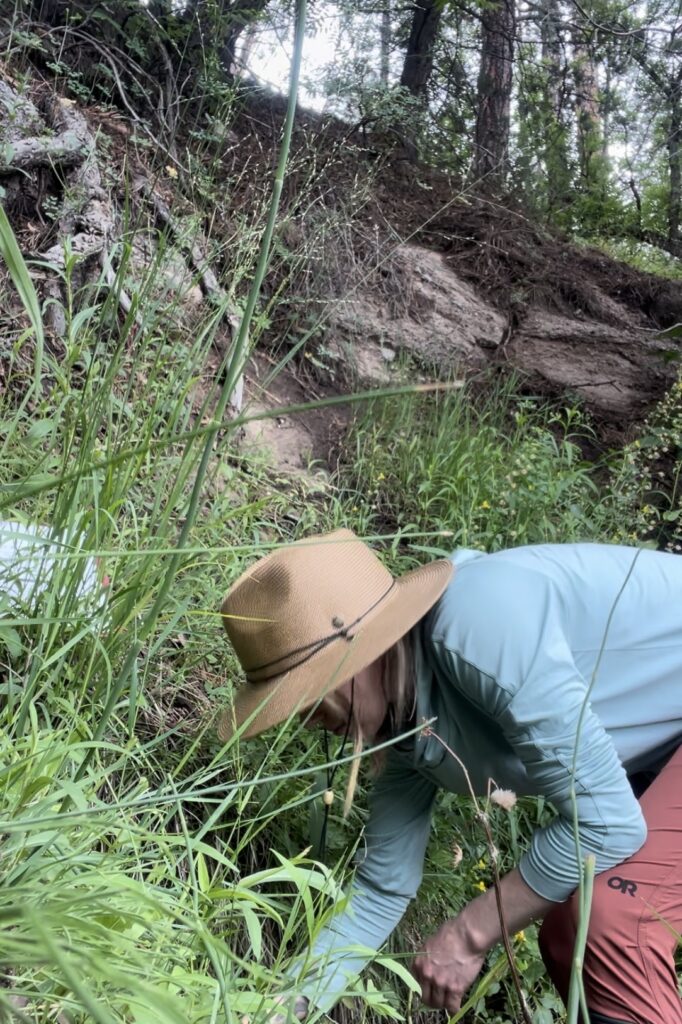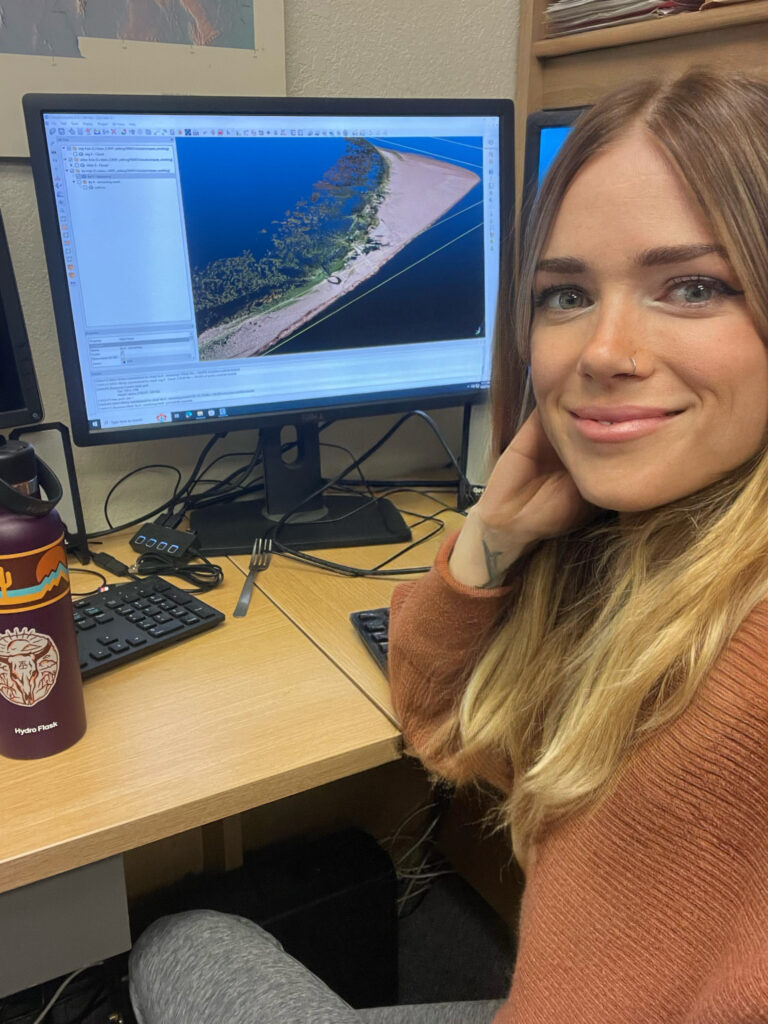— by Heather Elliott, 2024 Avery Intern Scholar
I had the privilege of being nominated for this year’s Charles C. Avery Intern Scholarship, which provides students with an opportunity to work with hosts in the hydrological sciences. This was a wonderful opportunity to network with hydro professionals and obtain valuable real-world experience. I was able to choose from a list of entities in Flagstaff to work with over the summer, for a total of 200 hours. I chose to work with the USGS, Springs Stewardship Institute (SSI), and Grand Canyon Monitoring Research Center (GCMRC). This experience helped shape my future career path and influenced how I will approach the science of hydrology in a changing world.
I couldn’t contain my excitement to begin my stint with the USGS (as I have always dreamed of working there!) I was able to meet with hydrologists and hydro techs to learn about how they operate protocols and what research projects are currently happening at USGS. I attended meetings about groundwater projects and spent some time in the field collecting data on stream gages around Prescott, Camp Verde, and Flagstaff. It was fascinating to see how much work USGS does to maintain current data on rating curves (stage/discharge relations) for stream flow. I saw many different methods used for this and I was most interested in the differential leveling process they use. They also shared with me how they implement drones for LIDAR surveys and programs for data collection, as well as how they use cableways to do a water chemistry analysis.
My second host was SSI, a smaller nonprofit organization that studies spring ecology and stewardship. I spent 2 days training on their protocols to learn how they implement three different levels of surveys on spring sites. After the training, I spent a few days in New Mexico to help the team complete a level 2 survey. During this trip, I learned how they analyze water chemistry, measure flow, and classify geography, botany, geology, invertebrates, and vertebrates etc. This experience piqued my interest in the ecology that is affected by springs in the Southwest and particularly my knowledge of plants. It was impressive to see the database that was created by SSI over the years. Several spring types had been classified along with various microhabitats in which to expect certain ecological environments. The amount of knowledge needed by each team member to conduct a proper survey needs to be vast, and with that, I was humbled by every scientist I worked with. My time with SSI was short but it was extremely valuable to see the importance of protecting springs all over the world, as many species are endemic to just one spring.
The last host I had the pleasure to work with was GCMRC. Although I was hopeful to see what they do in the field, I felt I learned a useful skill in processing data from LIDAR imaging. I learned how to use the program CloudCompare, where I worked on four different sites. This data was used to understand how vegetation plays a role in sandbar aggradation, and how it is affecting fish populations. I spent many hours separating vegetation points from bare-earth-material points using standard deviation and other techniques in CloudCompare. My time at GCMRC further increased my interest in fluvial geomorphology.
My experience gave me great insight into the hydrological needs of an arid climate, but also the exciting research that is happening in Flagstaff and the Southwest. To say I am forever changed by this intern scholarship is an understatement, and I feel more certain about my career path than I had before. Any student looking for an opportunity to get real world experience should apply for this intern scholarship. It is wonderful to see so many hosts willing to share their knowledge and see AHS support all of it. I am now looking forward to a career in the hydrological sciences.

